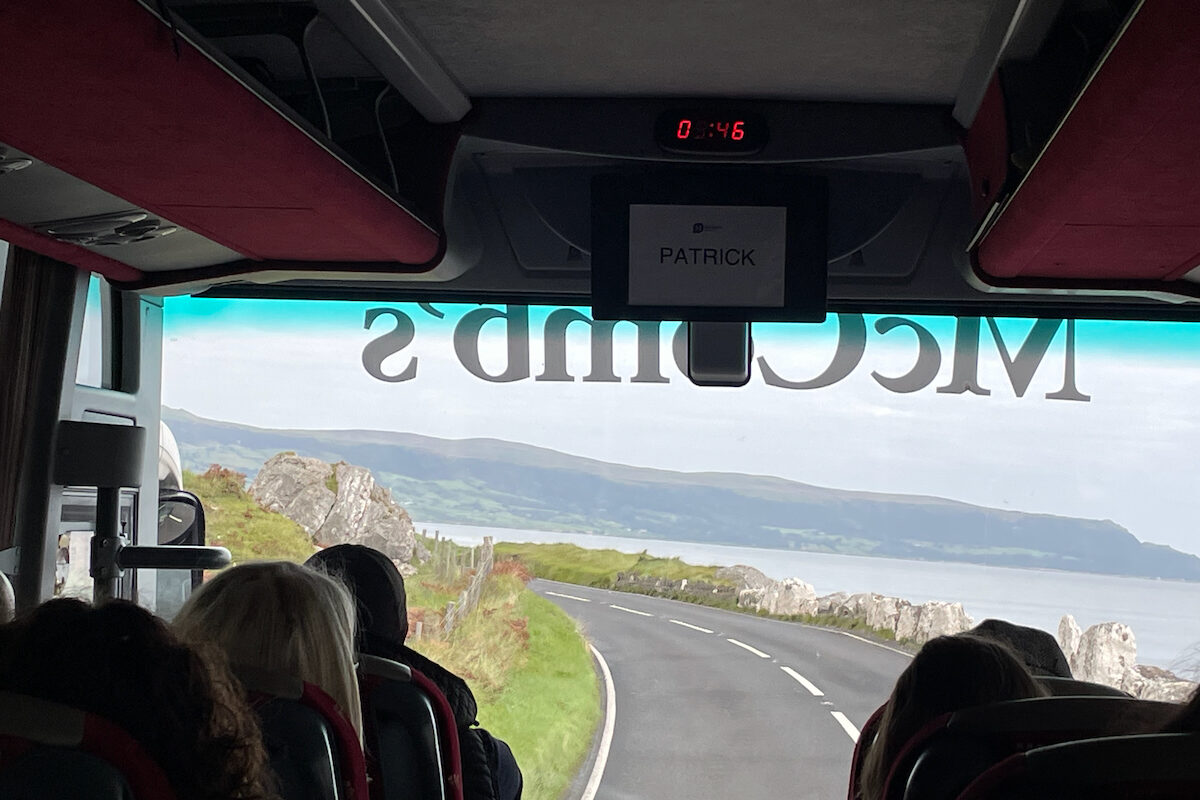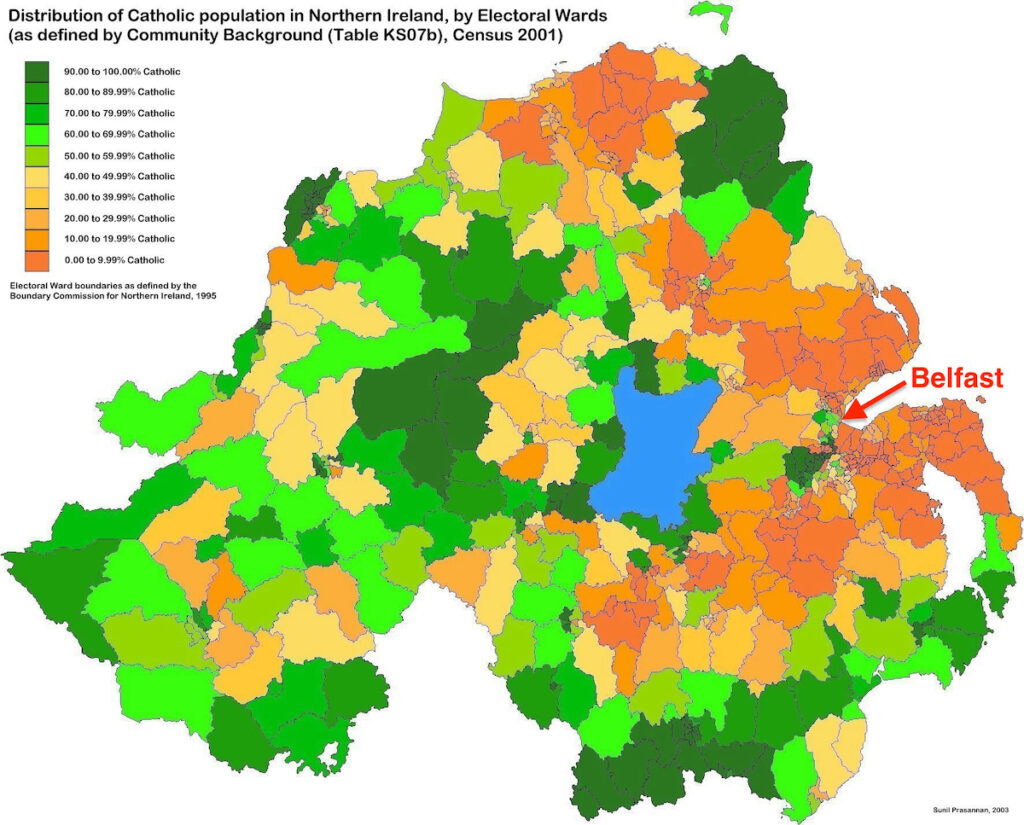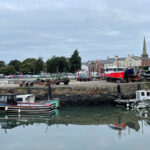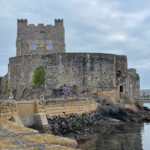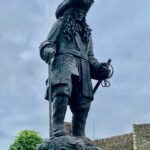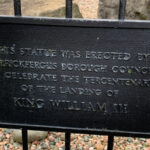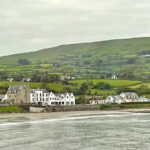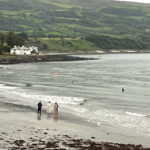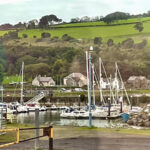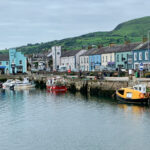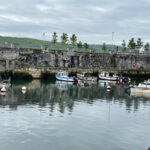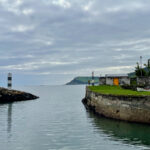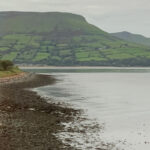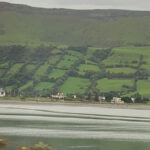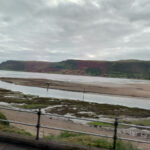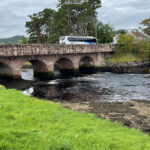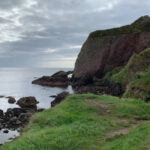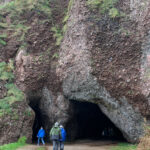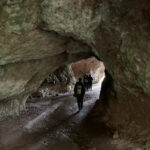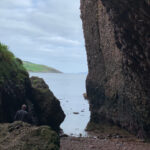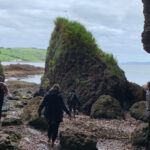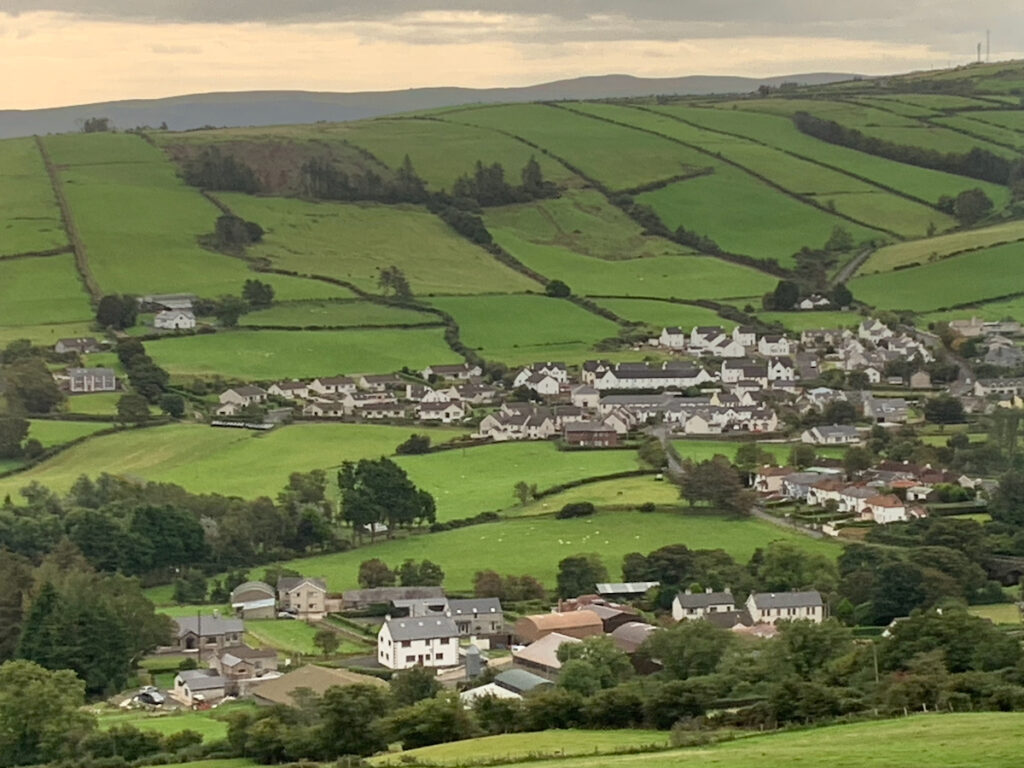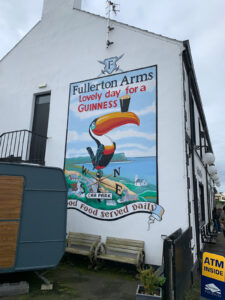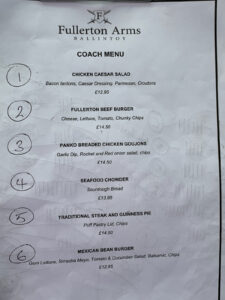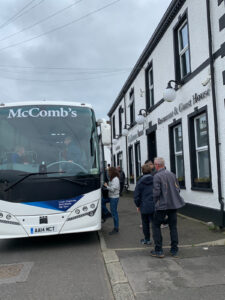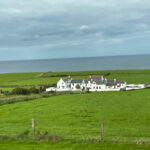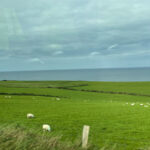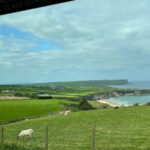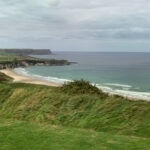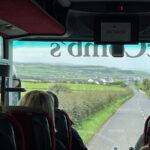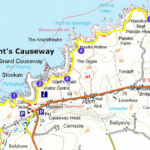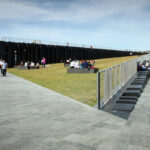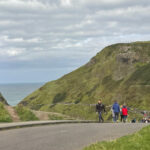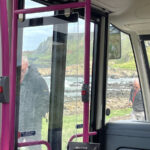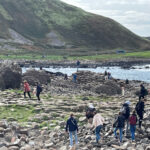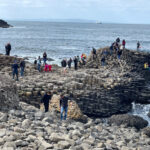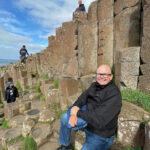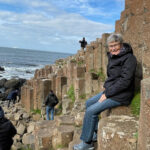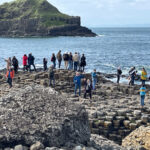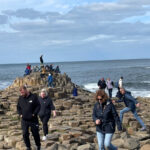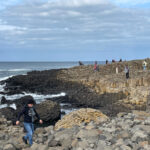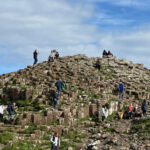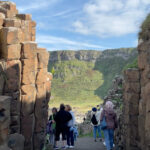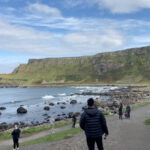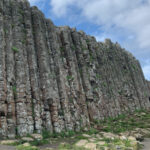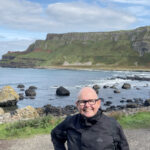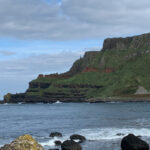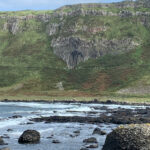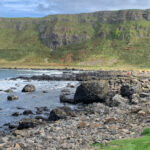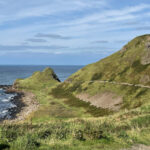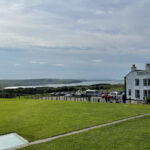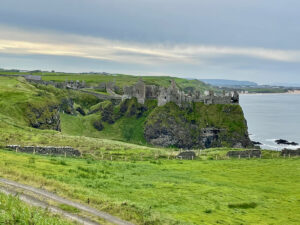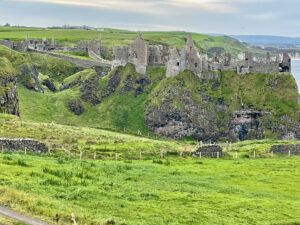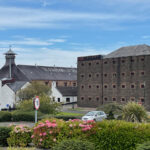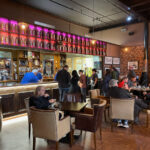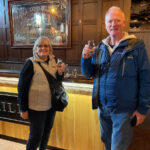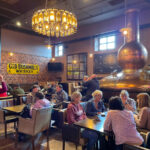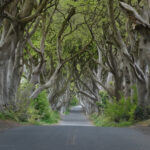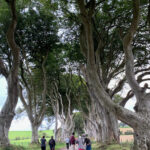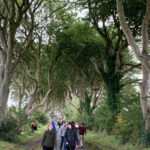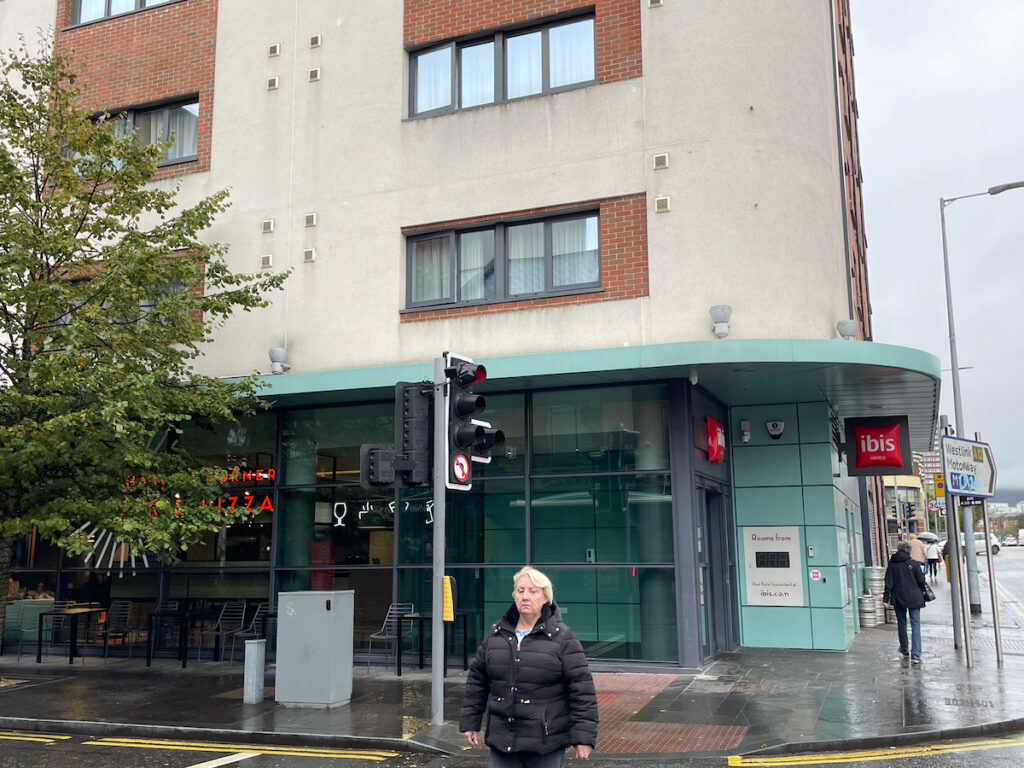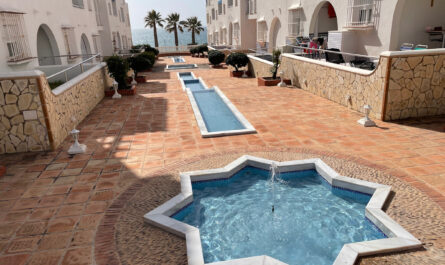Our time in Galway complete, we hopped on a train to Dublin, transferred over to Connolly station from Heuston Station upon arrival, and took another train up to Belfast where the Love-goddess and I ended up spending four nights. All in all, the total travel time from Galway to Belfast was six hours.
I am still formulating my thoughts about what I would like to say about Belfast, so I’m just going to set that aside for now and tell you about this fantastic road trip we went on up to the Giant’s Causeway at the northern end of the island.
I am not in the habit of endorsing companies or products, but occasionally we have such a good experience that I don’t mind giving one a shout out. And this article is in large part a shout out to McComb’s Coaches with whom we signed on to make this day trip.
Belfast, Northern Ireland, and the Divisions
Before I launch into the road trip, I suppose it’s best to say a few words about Belfast and Northern Ireland in general. It is a very different place than the Republic of Ireland, which was very noticeable on this outing.
Everyone has heard about “The Troubles”, and seemingly, the violence had finally been ended with the Good Friday Agreement. I think I had myself been convinced that the differences that had split the country and the people had largely been set aside and people were generally moving on with their lives.
That is clearly not the case, as you will see when I eventually write about our four-day stay in Belfast. Belfast remains a city divided, and I got the sense as we travelled north that the towns and cities, and in general the whole of Northern Ireland remains divided. And those divisions are still along religious affiliations, Protestant and Catholic.
It is hard to avoid hearing about “The Troubles” and the divisions while you are there. As we rode in a taxi from the train station to our hotel the cabby was going on about what parts of the city were Catholic and what parts were Protestant. And as you will see later, the Hop-On Hop-Off bus tour we did around Belfast primarily focussed on “The Troubles” and the divisions within the city.
It came as no surprise then that a lot of the information provided on the road-trip north was about the divisions. Our driver, Patrick, pointed out as we passed through small towns whether they were Catholic or Protestant supporters.
I was curious about that, so I searched for information and found something very interesting… a map developed from a recent census. What I found was the following image showing the breakdown of predominantly Catholic and Protestant electoral areas in Northern Ireland. I added the identification of the location of Belfast.
The table included refers to percentages of electoral areas with voters who identify as Catholic. But you can tell from the orange and the green colouring which areas are predominantly one or the other religion.
I’m not sure that the religious affiliations of individual towns and cities is determined by the predominant religion in electoral areas in which they are situated, but in most cases I expect it holds true.
A Brief History Lesson
I think a brief look at how all of this started is in order at this point. It was the conflict between deposed James II, who felt he was the rightful ruler of England and William III, also known as William of Orange, the ruling king of England.
From the Royal Museums Greenwich website, I paraphrase and quote…
“Catholic James II had fled England after William of Orange and his troops landed at Torbay in the southwest part of the country. In 1690 the deposed King James II attempted to re-capture his throne with the aid of French troops by way of Ireland, whose Catholic population, he believed, might support him. He soon captured most of Ireland, until King William’s forces drove him out.”
William of Orange landed at Carrickfergus near Belfast on 14 June 1690, and took command of the army, which ultimately went on to defeat James and his troops at the Battle of the Boyne and ended Catholic rule in Ireland.
The Trip Begins
And now, the good stuff. 🙂 I will be essentially presenting the information and photo galleries in the chronological order in which the tour took place. One of the things that continuously came up during the tour… Other than religious divisions… Were the constant references to the filming of the Game of Thrones in Northern Ireland.
Almost every stop we made had a filming location or offered artefacts from the show. I am not even going to mention the minor ones here.
Obviously, it was a big deal, and probably pumped a lot of money into local economies. If you want, you can go on a similar tour to ours in which all the stops are related to Game of Thrones.
McComb’s Giant’s Causeway Tour
We departed from the designated pick-up spot in Belfast at 8:30 in the morning. Fortunately, the pick-up spot was close to our hotel. We got back at about 5 PM, so it was a full day with lots of interesting stops along the way. Well worth the £30 (~$50 CAD) each that we paid.
Here is a link to the trip description on their website. I would not hesitate to recommend this tour by this company to anyone. That said, I think part of the real enjoyment also lay in the fact that the weather was extremely pleasant that day. The bus driver said it was the first day in a month that it did not rain at some point during the trip.
Here is the list they provide in their description of the stops that are made, although, we did not do them in this exact order and the driver added in one extra stop at the Bushmills Distillery because it was a Saturday and we had made really good time on the roadways. I will be referencing all of them as I work my way through the various photos in the galleries.
-
- Carrickfergus Castle (photo stop)
- Causeway Coastal Route
- Carnlough, Cushendun, The Dark Hedges
- Giant’s Causeway
- Dunluce Castle (Photo stop)
Here we go!
Carrickfergus Castle – Carrickfergus Castle was a “photo stop” as advertised… we did not get to go inside the castle, although you can. I think, just as importantly, it was also a “toilet” stop.
Causeway Coastal Route – I declared halfway up the drive on the causeway coastal route that this drive alone was worth the £30 that the trip cost. It is a gentle two-lane road that absolutely hugs the coastline along the eastern shore of Northern Ireland.
We passed through charming seaside villages… There’s that darn “charming” word again… And witnessed endless pastoral rural scenes like you will see in many of the pictures. If you are ever in Ireland with your own car, a drive up and down the road, stopping along the way, would be a fantastic way to spend a day.
I will attempt to identify every village and location that we passed through so you can look up the spots on Google Maps if you so choose.
Cushendun Caves – We made another brief stop in Cushendun … On the bridge, as you can see, to check out the Cushendun Caves. They were used in the filming of the Game of Thrones.
The Nine Glens of Antrim – Part way through the beautiful Glens of Antrim we headed uphill on route towards the North Shore to re-join the Coastal Road. The Nine Glens, or valleys, are worth a visit if you have a car.
Lunch Stop – We stopped at the Fullerton Arms Pub in Ballintoy for lunch. It also had some Game of Thrones “artifacts” to draw in tourists… A reproduction of the iron throne. Lunch was tasty and quick. The bus driver had taken all our orders and called them in not long after our trip began. Lunch was not included in the price of the trip.
Back On the Road – The rest of the drive to the causeway followed Ireland’s North Shore. More great scenes and views.
Giant’s Causeway
Despite the beautiful drive up the Irish coast the day’s highlight was getting to see and walk around the Giant’s Causeway. I have included a map of the greater causeway area contained within the site for your reference. The actual Giant’s Causeway peninsula is referred to as the “Grand Causeway”. We were dropped off near the visitor centre.
The stop was for approximately two hours – which is just about the right amount of time if you simply want to walk down and enjoy the major geographical feature and then visit the local hotel or visitor center.
You do not have to pay anything to walk down and visit the causeway. But it does cost £13.50 per person if you want to go into the visitor center. You can follow my link to the visitor centre to see if there is anything in there that would be of interest to you. The website might make it seem like you must pay to visit the site, but you most certainly do not have to.
There are several routes down to the causeway from several different points on the site… Some much more rugged than others. But the main roadway leading down from the visitor centre is a very gentle walk. And if you don’t feel like walking there is a shuttle bus that costs just £1.00 to ride each way.
What it’s all about, from Wikipedia…
“The Giant’s Causeway (Irish: Clochán an Aifir) is an area of about 40,000 interlocking basalt columns, the result of an ancient volcanic fissure eruption.
It was declared a World Heritage Site by UNESCO in 1986 and a national nature reserve by the Department of the Environment for Northern Ireland in 1987.
The tops of the columns form stepping stones that lead from the cliff foot and disappear under the sea. Most of the columns are hexagonal, although some have four, five, seven, or eight sides. The tallest are about 12 metres (39 ft) high, and the solidified lava in the cliffs is 28 metres (92 ft) thick in places.”
Pictures and Videos
A quick video shot on the west side of the site.
After checking out the west side of the Causeway we headed along the pathway that cuts through the rock to the east side. The east side provides a spectacular view of the furthest reaches of the eastern portion of the site.
This video provides a more all-encompassing look at the east side of the site.
Wrapping up the Visit
The Trip Back to Belfast
After visiting the Causeway, we began a more direct journey back to Belfast – which included a few brief stops along the way.
This was of interest to me because I knew the route took us close to the part of County Antrim where my ancestors came from, namely, the general area around the town of Ballymena.
Dunluce Castle (Photo stop) – The photo stop at Dunluce Castle was exactly that, just a quick stop to hop off the bus and take a few shots of the castle from a distance. It is famous because a portion of the back of the castle… the kitchen… collapsed into the ocean while people were living there. Apparently, the lady of the manor refused to stay there after that happened.
Bushmills Distillery – The stop at Dunluce Castle was quickly followed up by a stop at the famous Bushmills Distillery. As mentioned, the driver announced that we had made such good time coming north that it was now possible to stop there for 1/2 hour visit before continuing our trek back to Belfast.
As much as I would have enjoyed a few sips of the Irish nectar my body no longer seems to tolerate the imbibing of spirits. That means no Scotch, no bourbon, no whiskey, no nothin’! 🙁
That notwithstanding, it was fun to pull in and have a look around. There was a major-domo gift store of course where you could pick up a very “personalized” bottle of Bushmills, only available at the distillery. Geez, I love marketing. 🙂
The Dark Hedges – The Dark Hedges is a new tourist attraction in Northern Ireland. And once again, it is simply because it was used in the filming of Game of Thrones.
Essentially, it is a laneway lined with the beech trees that have been growing for a very long time and are now partially intertwined. Several of the trees have been knocked down in storms or died over the years, but an effort is being made to maintain the attraction.
Not really a must see in my humble opinion.

